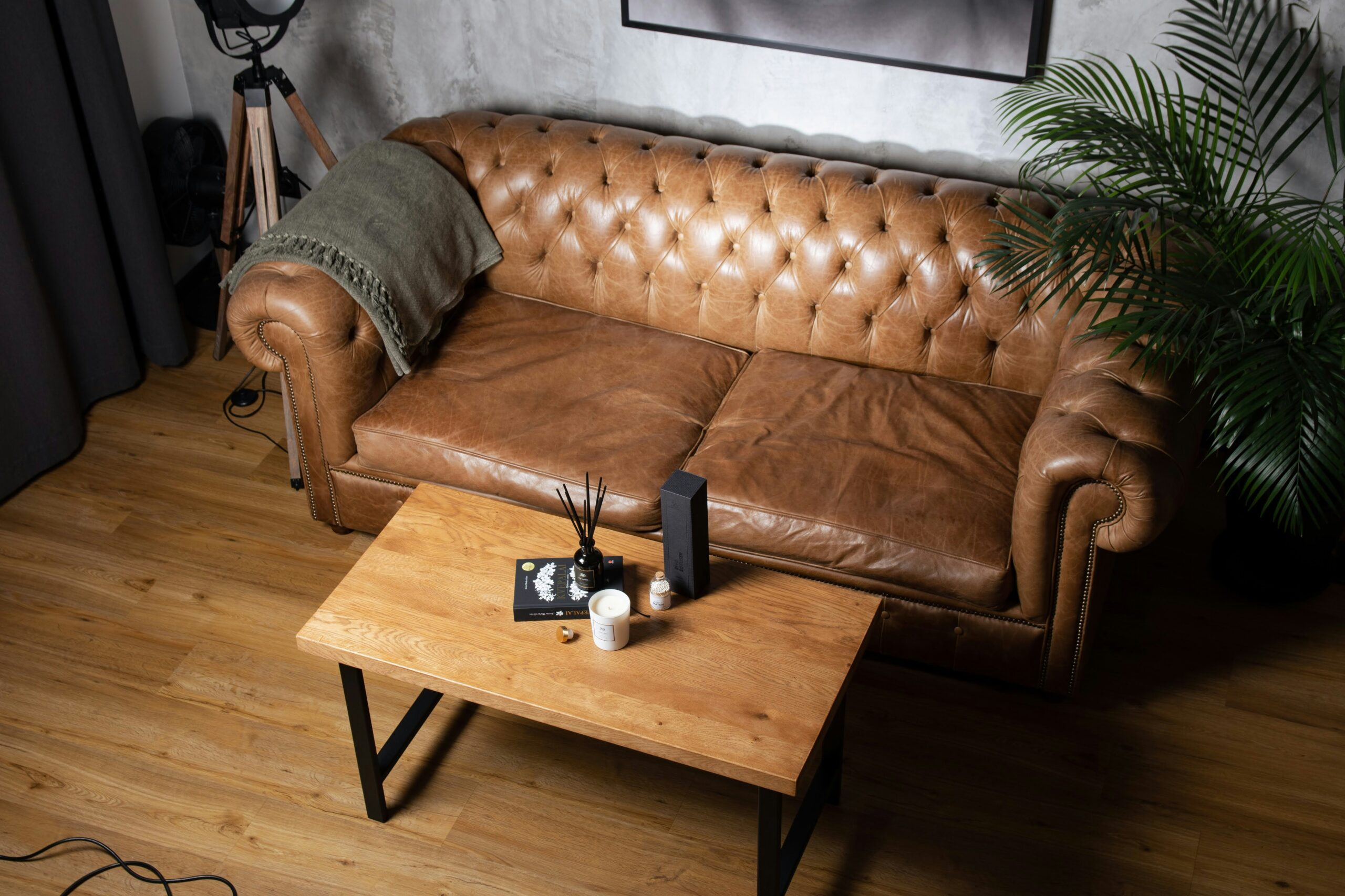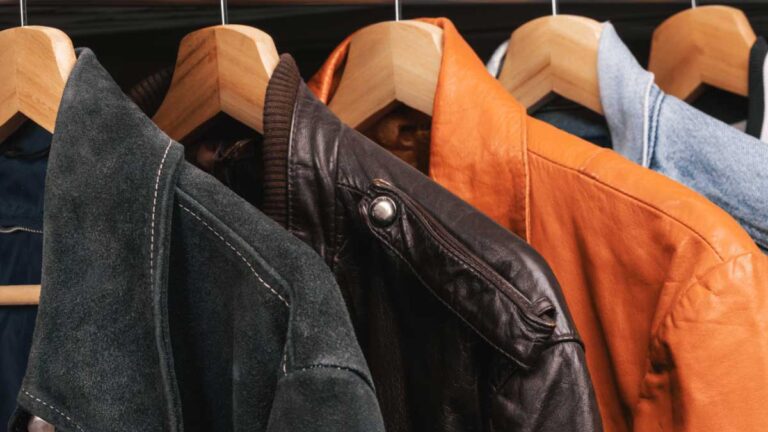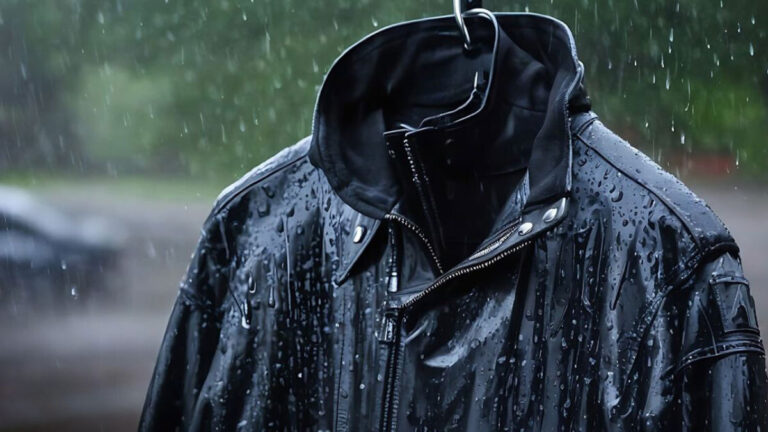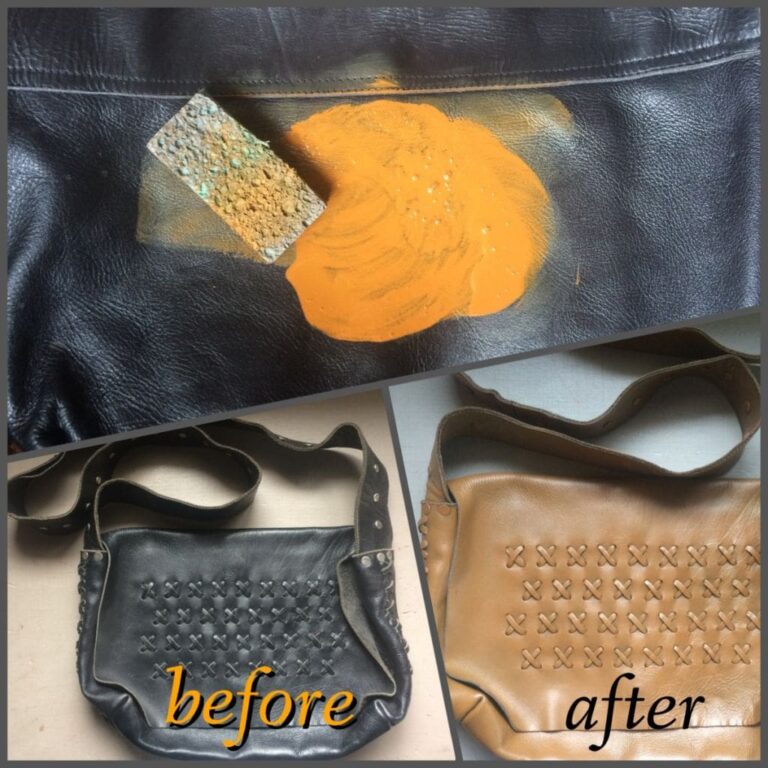Revitalize Your Space: How to Properly Wash Your Leather Couch
Leather Couch Care Basics
Proper care is essential to maintain the beauty and longevity of your leather couch. Here, we discuss the importance of regular cleaning and the recommended frequency for doing so.
Importance of Regular Cleaning
Cleaning and conditioning your leather couch regularly is crucial to keep the material in top condition (Martha Stewart). This routine care helps protect the leather from damage, prevents the buildup of dirt and oils, and ensures that your couch retains its luster. By using the appropriate cleaning products and methods, you can avoid damaging the leather and extend the life of your furniture.
Without regular cleaning, leather can become dry, which may lead to cracking and peeling. Regular maintenance not only keeps your couch looking its best but also prevents costly repairs. For more information on why leather can crack and peel, check out our article on why does leather crack and peel.
Recommended Cleaning Frequency
The frequency of cleaning and conditioning your leather couch depends on various factors, including usage and exposure to dirt and sunlight. According to Martha Stewart, a deep cleaning and conditioning should be done every six to twelve months. This timeline ensures that the leather remains moisturized and protected against wear and tear.
For routine cleanings, a gentle dusting tool, distilled water, and natural dish soap can be employed (Martha Stewart). Here is a guide to help you stay on top of your leather couch maintenance:
| Task | Frequency |
|---|---|
| Dusting | Weekly |
| Spot Cleaning | As Needed |
| Deep Cleaning and Conditioning | Every 6-12 Months |
For further tips on maintaining your couch between deep cleans, visit our comprehensive guide on how to get stains out of leather and for advanced leather care, see how to soften hard leather.
By following these guidelines, you can ensure that your leather couch remains a beautiful and functional centerpiece in your home for years to come.
Types of Leather Couch
Understanding the different types of leather used in couches is essential for proper maintenance and care. This section explores full grain vs. bonded leather and faux/vegan leather options.
Full Grain vs. Bonded Leather
Full grain leather is considered the highest quality leather available. It maintains the hide’s natural grain without being sanded or buffed, retaining its strength and durability. This type of leather can have various finishes, such as absorbent semi-aniline, aniline, or water-repellent pigmented finishes.
In contrast, bonded leather is made by blending leather scraps with synthetic materials like plastic and polyurethane. Typically, only 10 to 20% of the material is actual leather (McElherans). It’s a more affordable option, but not as durable as full grain leather.
| Leather Type | Composition | Durability | Finish Options |
|---|---|---|---|
| Full Grain Leather | 100% natural hide | High | Aniline, semi-aniline, water-repellent pigmented |
| Bonded Leather | 10-20% leather scraps, synthetics | Low | Varies |
Faux/Vegan Leather
Faux or vegan leather mimics the appearance of real leather but is made from synthetic materials like polyvinyl chloride (PVC) or polyurethane (PU). This type of leather does not contain any animal products, making it a preferred choice for those seeking cruelty-free alternatives.
While faux leather can be less durable and may show wear over time, it offers a budget-friendly and animal-friendly option for furniture. For more information on vegan leather alternatives, see our article on is faux leather vegan.
By understanding the differences between these leather types, you can make informed decisions about your leather couch’s care and cleaning routine. For tips on handling specific stains and cleaning supplies to avoid, check our articles on how to get stains out of leather and how to remove odors from leather furniture.
Cleaning Specific Leather Types
Understanding the specific needs of different leather types is critical when it comes to properly washing your leather couch. Here, we focus on two main types: aniline leather and protected leather.
Aniline Leather Care
Aniline leather is dyed with soluble dyes without additional pigments or protectants, giving it a soft and porous texture. This natural look also makes it more susceptible to scratches and stains due to the lack of a protective coating (McElherans). Proper care involves gentle cleaning methods and regular conditioning.
Key Care Instructions for Aniline Leather:
- Dusting: Use a soft, dry cloth to remove dust and prevent dirt buildup.
- Spot Cleaning: For light stains, use a damp cloth slightly moistened with distilled water. Always dab, never rub.
- Conditioning: Apply a high-quality leather conditioner every 3-6 months to maintain softness and prevent drying out.
- Avoiding Sunlight: Keep aniline leather away from direct sunlight to prevent fading.
| Aniline Leather Care | Frequency | Method |
|---|---|---|
| Dusting | Weekly | Soft, dry cloth |
| Spot Cleaning | As needed | Damp cloth, distilled water |
| Conditioning | 3-6 months | High-quality leather conditioner |
| Avoiding Sunlight | Always | Place away from windows and direct sun exposure |
For more about protecting your aniline leather, explore our article on how to get stains out of leather.
Protected Leather Maintenance
Protected leather, often called pigmented or finished leather, includes a protective topcoat that makes it more resistant to stains and wear. This type of leather is easier to manage due to its durability and lower maintenance needs.
Key Care Instructions for Protected Leather:
- Dusting: As with aniline leather, use a soft, dry cloth to remove dust regularly.
- Cleaning: You can use a slightly damp cloth with mild soap for deeper cleaning. Rinse with another damp cloth and dry with a soft towel.
- Conditioning: Use a leather conditioner specifically designed for protected leather every 6-12 months.
- Addressing Stains: Blot stains immediately with a clean cloth. Avoid using harsh chemicals that can strip the protective layer.
| Protected Leather Care | Frequency | Method |
|---|---|---|
| Dusting | Weekly | Soft, dry cloth |
| Cleaning | Monthly | Damp cloth, mild soap, rinse and dry |
| Conditioning | 6-12 months | Specific leather conditioner |
| Addressing Stains | Immediately | Blot with clean cloth, avoid harsh chemicals |
To ensure longevity, read our detailed guide on why does leather crack and peel.
By following these cleaning techniques, you can keep your leather couch looking its best, regardless of the type. Regular maintenance helps to preserve the beauty and durability of your leather furniture. For more tips on caring for leather, check out how to wash leather jacket and other related articles through the internal links provided.
Whether you opt for aniline or protected leather, the key to longevity is regular care and knowing what materials and methods will keep your investment in top shape.
Cleaning Supplies to Avoid
When learning how to wash a leather couch, it’s crucial to know which cleaning supplies should be avoided to prevent damage to the material. Using the wrong products can permanently harm your leather couch.
Harmful Cleaners
Certain household cleaners and substances can be too harsh for leather, causing it to crack, fade, or lose its protective layer. Here is a list of items you should avoid:
- Baking Soda: Although useful for many cleaning tasks, it can be abrasive and dry out the leather.
- White Vinegar and Lemon Juice: Both are too acidic and can deteriorate the leather surface.
- Cream of Tartar: Its acidic properties can be harmful to leather.
- Nail Polish Remover and Window Cleaner: These contain chemicals that can strip color and damage the protective finish.
- Hairspray: It includes alcohol, which can dry out and distress the leather.
- Disinfectant Wipes: Often contain strong chemicals that are too harsh for leather.
- Improper Leather Polish: Some polishes can cause discoloration or build-up, making the leather look worse over time.
Refer to this table for a summary:
| Harmful Cleaner | Potential Damage |
|---|---|
| Baking Soda | Abrasive, dries out leather |
| White Vinegar | Too acidic, deteriorates surface |
| Lemon Juice | Acidic, deteriorates surface |
| Cream of Tartar | Harmful acidity |
| Nail Polish Remover | Strips color, damages finish |
| Window Cleaner | Strips color, damages finish |
| Hairspray | Drying, distressing |
| Disinfectant Wipes | Harsh chemicals |
For more tips on protecting your leather items, check out how to why does leather crack and peel.
Suitable Cleaning Materials
Using the right cleaning materials can help maintain the integrity of your leather couch. Opt for gentle cleaning agents and tools specifically designed for leather care:
- Mild Soap and Water: Use a diluted, unscented hand soap or dish soap. Gently wipe with a damp washcloth to remove stains.
- Specialized Leather Cleaners: Products formulated for leather are effective and safe.
- Microfiber Cloths: Soft and gentle, suitable for wiping and maintaining leather.
- Leather Conditioners: Help keep the leather supple and prevent cracking.
Here’s a breakdown of suitable cleaning materials:
| Cleaning Material | Benefits |
|---|---|
| Mild Soap and Water | Gentle, effective stain removal |
| Specialized Leather Cleaners | Safe, formulated for leather |
| Microfiber Cloths | Soft, prevents abrasion |
| Leather Conditioners | Maintains suppleness, prevents cracking |
For further information on keeping your leather items pristine, explore our article on how to remove smell from leather sofa.
Understanding these guidelines will help you make informed decisions when cleaning your leather couch, ensuring it remains in excellent condition for years to come.
Stain Removal Techniques
Stains on your leather couch can be frustrating, but with the right techniques, you can tackle them effectively. This section will guide you on how to address different types of stains and use leather conditioner to maintain your couch’s appearance.
Addressing Different Stains
Stains should be treated based on their type to prevent damage to the leather. Here are some common stains and the best methods to remove them:
Food and Drink Stains
- Mild Soap and Water: Mix a small amount of unscented hand soap or dish soap with warm water. Damp a washcloth with the solution and gently blot the stain. Avoid rubbing to prevent spreading the stain (Clean Bees).
Ink Stains
- Rubbing Alcohol: Apply a small amount of rubbing alcohol to a cotton swab and gently dab the stain. Test on a hidden area first to ensure no discoloration.
Oil and Grease Stains
- Cornstarch or Baking Soda: Sprinkle cornstarch or baking soda onto the stain and gently rub it in. Let it sit for a few hours or overnight, then brush off with a soft-bristled brush (Fabricare Center Blog).
Water Stains
- Distilled Water: Dampen a cloth with distilled water and blot the stain gently. Let it dry naturally away from direct heat sources.
It’s important to avoid using harsh household cleaners like vinegar, lemon juice, or cream of tartar as they can damage the leather and make stains worse. Always test any cleaning solution on a small, inconspicuous area first.
Using Leather Conditioner Effectively
Leather conditioner is crucial for maintaining your couch’s longevity and appearance. Conditioning creates a protective seal that helps guard against oil, water, dirt, and food spills. Here’s how to use it effectively:
- Clean the Surface: Before applying conditioner, ensure the leather is clean and free of dirt and stains. Use the appropriate cleaning methods based on the stain type.
- Test the Conditioner: Apply a small amount of conditioner to an inconspicuous area to test for any adverse reactions.
- Apply the Conditioner: Using a soft cloth, apply the conditioner in small, circular motions. Cover the entire surface evenly.
- Let it Absorb: Allow the conditioner to absorb into the leather for at least a few hours, or as indicated on the product label.
- Buff the Leather: Use a clean, dry cloth to buff the leather gently, removing any excess conditioner and restoring its natural shine.
Regular conditioning helps keep the leather supple and reduces the likelihood of cracks and peels. For more detailed care instructions, check out our guide on why does leather crack and peel.
Proper stain removal and conditioning are key to maintaining the beauty and durability of your leather couch. For more tips on leather care, explore our resources on how to remove urine smell from leather couch and how to clean other leather items.
Professional Leather Care
Properly caring for your leather couch can be a meticulous task. Knowing when to seek professional help can ensure your investment is well protected.
Opting for Professional Cleaning
Investing in professional cleaning services for your leather couch is an excellent way to maintain its quality and extend its lifespan. Professional cleaners have access to specialized techniques and products designed specifically for leather care. They can effectively remove tough stains without compromising the integrity of your couch (Martha Stewart).
The benefits of choosing professional leather cleaning include:
- Effective Stain Removal: Professional services can handle various stains, ensuring your couch looks pristine.
- Use of Specialized Products: Professional cleaners use products that are safe and effective for leather.
- Long-term Protection: Regular professional cleaning helps in maintaining the leather’s natural luster and texture, preventing cracks and damage.
Refer to our article on how to get stains out of leather for detailed stain-removal techniques.
Choosing the Right Dry Cleaner
When it comes to selecting the right dry cleaner for your leather couch, several factors should be considered. Here are some essential questions to ask:
| Question | Why It Matters |
|---|---|
| Do you have experience with leather? | Ensures the cleaner has the necessary expertise. |
| What methods do you use? | Determines if they use safe, effective cleaning techniques. |
| Do you use leather conditioner after cleaning? | Conditions the leather to keep it soft and crack-free. |
| What is your policy for damages during cleaning? | Protects you from potential damages to your couch. |
| What is the turnaround time? | Helps you plan the cleaning around your schedule. |
Selecting the right dry cleaner can make all the difference in maintaining the quality and appearance of your couch. For more insights on professional leather care, check out our guide on how to wash leather jacket.
Professional leather care services are a wise investment to ensure the longevity and beauty of your leather couch. By asking the right questions and selecting experienced cleaners, you can rest assured that your couch will be in good hands. For additional tips on maintaining your leather goods, check out our articles on how to soften hard leather and how to remove water stains from leather.







